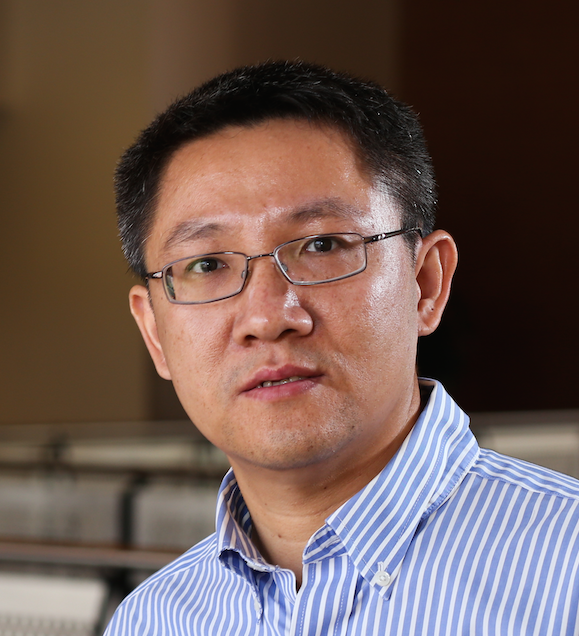
Dr. Shuang Tu is a professor in the Department of Electrical & Computer Engineering & Computer Science at Jackson State University (JSU). Apart from his teaching and service responsibilities, his research activities focus on high performance scientific computing.
What brought Dr. Tu to shift some of his research interests into the world of transportation engineering? It was through two doctoral students that he is advising in JSU’s Computational & Data -Enabled Science & Engineering program.
“One of students, Di Wu, has background in transportation, and her dissertation proposal topic is on automatic safety diagnosis in connected vehicle environment,” he said. “To be honest, it is this student’s proposal that brought me to the transportation field, and I am helping her construct a computational model to solve her problems in transportation
Dr. Tu’s research area is highly technical and computational. For example, he develops accurate, efficient, and robust numerical algorithms to solve differential equations used to describe physical problems (e.g., calculation of the aerodynamics forces around an aircraft) that can be applied to numerically solve physical quantity distributions in a field (e.g., flow field or electromagnetic field). Numerical solvers are parallelized using the Message Passing Interface (MPI) libraries on parallel computing systems. Dr. Tu and his research team recently began to incorporate OpenCL techniques to the solvers to further accelerate the heterogeneous CPU/GPU systems.
“Our targeted audience is industries who design aircraft, spacecraft and/or watercraft with better aerodynamic or hydrodynamic performance,” he said.
As for STRIDE, Dr. Tu is currently leading a project titled “Automatic Safety Diagnosis in Connected Vehicle Environment”. The project uses Big Data techniques to raw Basic Safety Messages (BSMs) in the Connected Vehicle (CV) environment to find out the relationship of car crashes and related BSM data.
Dr. Tu explains that the BSM data analysis is conducted in the model to tell if the individual driver deviates from their normal driving pattern, and then generates reliable warnings when a conflict is identified. Results from the project are expected to generate a near-crash diagnostic system that will be able to identify potential conflicts and generate warnings to drivers by processing BSMs in the CV environment.
“We believe our research will provide valuable benefits to researchers, practitioners, and society at large,” Dr. Tu said. “Through this research, drivers will be alerted to potential crashes in real-time and the rate of false warnings could be reduced.
It is also expected that this research will have a significant impact on non-recurrent traffic congestion as the crashes could potentially be avoided by the warnings.